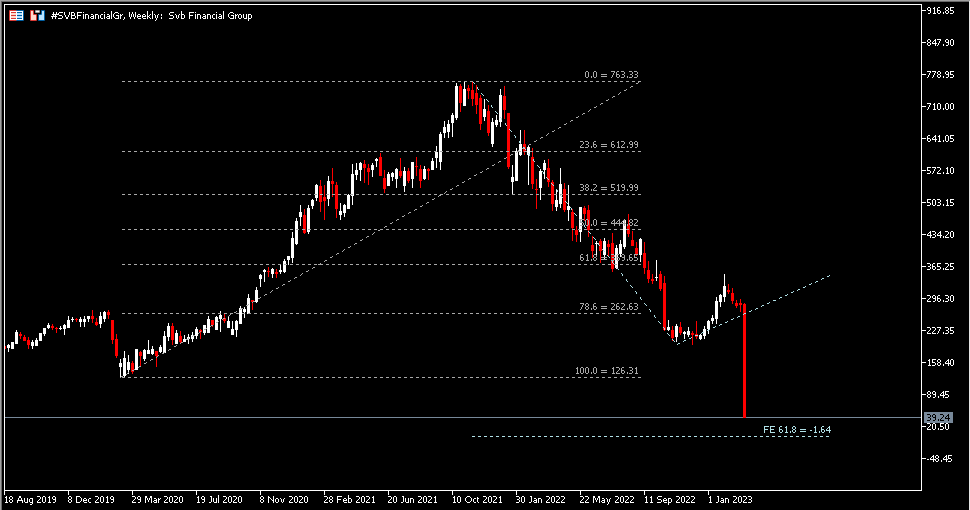The startup-focused financial lender Silicon Valley Bank (SVB) announced realization of $21B in AFS and the sale of stocks to raise $2.25B to cover an unexpected drop in deposits. The SVB move shall lead to a loss of -$1.8B after tax in the first quarter of this year.
The story goes back to March 2020. After the Fed launched unlimited QE and kept its interest rates ultra low, excess liquidity flowed to SVB, which is known for its focus on financing technology-based companies. It is reported that the total deposits of SVB expanded from $62.759B in Q1 2020 to $200.414B in Q1 2021. During the period, SVB also increased its holdings of $80B in MBS and $12B in treasury bonds, to $99.812B and $16.544B, respectively.
The MBS and treasury bonds invested by SVB achieved floating profits during 2020-2021, however the bank chose to continue holding them instead of selling. As a result, when the Fed started the rate hike cycle last year, an increase in interest rates caused bond prices to fall sharply. The floating losses of its MBS and treasury bonds at the end of the year were as high as -$9.349B and –$2.503B, respectively. Following an increase in deposit costs, loss of investment income and the recent liquidity risk events (eg. Blackstone and Silvergate), the bank received requests for huge withdrawals from tech companies, which eventually triggered a liquidity run.
The latest update was that the SVB became the first major bank since the global financial crisis in 2008 to be taken over by the Federal Deposit Insurance Corp. It has been reported that SVB also attempted to find a buyer following its failure to raise the capital required. The SVB’s demise was blamed on its unique business model. However, following SVB’s downfall, there was news on Sunday regarding closure of the New York’s Signature Bank – the third largest failure in US banking history. Domino effect about to trigger? We have yet to find out.
Technical Analysis:
The SVB paused its trading on Friday, ending the week at $39.24. In November 2021, its share price recorded a historical high at $763.33. Within the week, on Wednesday, its share price declined 65%, down 60% on Thursday, then plummeted another 65% before premarket trading was halted early Friday. The outlook seems bleak as “there are conversations to determine next steps for the bank”.
Click here to access our Economic Calendar
Larince Zhang
Market Analyst
Disclaimer: This material is provided as a general marketing communication for information purposes only and does not constitute an independent investment research. Nothing in this communication contains, or should be considered as containing, an investment advice or an investment recommendation or a solicitation for the purpose of buying or selling of any financial instrument. All information provided is gathered from reputable sources and any information containing an indication of past performance is not a guarantee or reliable indicator of future performance. Users acknowledge that any investment in Leveraged Products is characterized by a certain degree of uncertainty and that any investment of this nature involves a high level of risk for which the users are solely responsible and liable. We assume no liability for any loss arising from any investment made based on the information provided in this communication. This communication must not be reproduced or further distributed without our prior written permission.



















